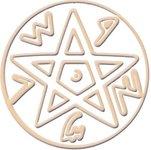Lecturer: Mr. Gadi Herzlinger, The Institute of archaeology, the Hebrew University of Jerusalem
The morphology of stone tools is one of their most important characteristics, both to their ancient makers and users and to modern archaeologists studying them. This morphology has been hypothesized to be strongly related to various aspect of human behavior and natural agent, all having implications on their archaeological interpretation. Notwithstanding its importance, the quantitative, high resolution description and analysis of 3D shapes of complex irregular objects such as stone tools is not a simple and straightforward task. Homologous landmarks based geometric morphometric analysis provides one of the most effective methods for such description and analysis (Mitteroecker and Gunz 2009). However, due to a number of inherent and technical difficulties, its application to the study of stone tools is still quite limited (Lycett and Chauhan 2010). While several difficulties related to the phase of data acquisition have recently been resolved using a specially developed computerized tool (Herzlinger et al. under review), the subsequent phases of statistical analysis and results still pose numerous problems. These include the need of high level of familiarity and deep understanding of the statistical procedures, various manipulations that had to be applied to the data as preparation for analysis, and the use of multiple, complex and expensive statistical programs.
The following presentation will exhibit a newly developed computerized program for the analysis and results-exploration of 3D geometric morphometric data, designed especially for archeologists. The software was designed with an emphasis on simplicity and clarity to provide only the data and results which are commonly required to answer archaeological questions relating to shape variability if stone tools. Thus, it easily provides quantitative results to questions such as how variable is a specific group of tools? Which of two or more groups of items is more variable, and to which degree? How different or similar are tools belonging to different independent categories (typological, regional, chronological, cultural)? These results can then serve as a quantitative, objective and replicable foundation for following archaeological interpretation and definition of independent groups such as tool types or cultural entities.
The operation of the software along with its various options will be demonstrated using the bifacial tools assemblages of GBY. It will address the issues of inter- and intra-level morphological variability/homogeneity and the morphological differences between two types of bifacial tools: the handaxe and the cleaver.
Reading:
Mitteroecker, P., & Gunz, P. (2009). Advances in geometric morphometrics. Evolutionary Biology, 36(2), 235-247.
Lycett, S. J., & Chauhan, P. R. (2010). Analytical Approaches to Palaeolithic Technologies: An Introduction. in: Lycett, S.J., & Chauhan, P.R. (Eds.), New Perspectives on Old Stones: Analytical Approaches to Paleolithic Technologies. Springer, New York. pp. 1-22.

